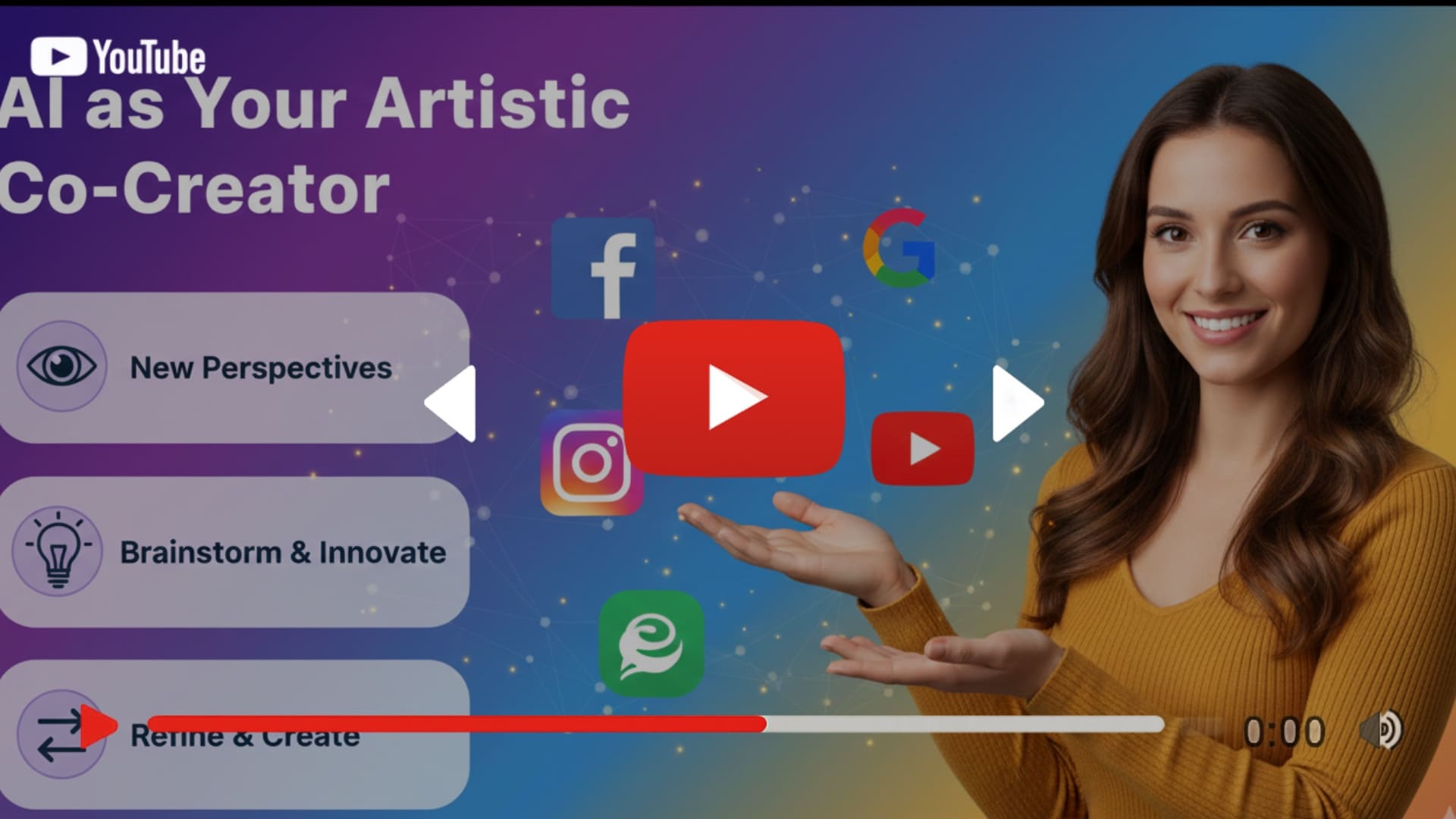In an era defined by rapid technological advancement, artificial intelligence is no longer just a tool for automation; it's emerging as a legitimate partner in the creative process. For artists, writers, and musicians, AI offers a new frontier of collaboration, transforming how ideas are generated, developed, and brought to life. This article delves into the exciting realm of AI co-creation, examining practical techniques and inspiring examples of how intelligent systems are enhancing human artistry.
The Paradigm Shift: From Tool to Partner
Historically, tools have served as extensions of the artist's hand. A paintbrush, a pen, an instrument—all are mechanisms through which human intention is manifested. AI, however, represents a departure from this traditional dynamic. Instead of merely executing commands, sophisticated AI models can interpret, generate, and even offer creative suggestions, positioning themselves as true co-creators. This shift unlocks unprecedented possibilities, allowing artists to offload repetitive tasks, overcome creative blocks, and explore concepts that might otherwise remain undiscovered.
Brainstorming with AI: A New Creative Ally
One of the most immediate and impactful applications of AI in creative projects is its role as a brainstorming partner. Imagine having an assistant capable of generating thousands of unique ideas in seconds, synthesizing diverse concepts, and offering fresh perspectives on any given prompt. This is precisely what AI brings to the table:
- Concept Generation: For writers facing a blank page, AI can suggest plot twists, character backstories, or dialogue snippets. Musicians can input a theme or mood and receive melodic phrases or harmonic progressions. Visual artists can describe a scene and get numerous compositional layouts or color palette suggestions.
- Style Exploration: AI can generate variations of an existing piece in the style of different artists or artistic movements. This allows creators to experiment with new aesthetics without the extensive training typically required.
- Constraint-Based Creativity: By providing specific parameters (e.g., 'a story about a detective in a cyberpunk setting with a touch of noir comedy'), AI can generate outputs that adhere to these constraints, pushing the creator to think within a defined framework.
- Unconventional Connections: AI's ability to process vast amounts of data enables it to draw connections and combine elements that a human might not initially consider, leading to genuinely novel ideas.
"The greatest power of AI in creative endeavors lies not in replacing human ingenuity, but in augmenting it, providing a mirror that reflects countless possibilities back to the artist." - Professor KYN Sigma
AI in Practice: Diverse Artistic Applications
Writers and Storytellers
AI writing assistants can help overcome writer's block by generating opening lines, developing character arcs, or even drafting entire scene descriptions. Tools like GPT-4 can suggest ways to advance a plot, introduce conflict, or refine dialogue. Authors are using AI to create alternate endings, explore different narrative voices, or expand on world-building details.
Musicians and Composers
AI is being used to compose melodies, generate harmonies, and even produce full arrangements. Platforms like Amper Music or AIVA can create bespoke soundtracks based on desired mood, genre, and instrumentation. Musicians can feed AI a simple motif and have it develop complex variations, or use it to explore new soundscapes and rhythmic patterns, allowing them to focus on the emotional depth and performance of the piece.
Visual Artists and Designers
From generating initial sketches to creating entire digital paintings, AI is revolutionizing visual arts. Tools like Midjourney or DALL-E 3 allow artists to transform text prompts into intricate visuals, providing endless inspiration and rapid prototyping. Designers use AI to generate logo variations, explore aesthetic directions, or even create intricate patterns and textures that would be time-consuming to produce manually.
The Future of Creative Collaboration
As AI models become increasingly sophisticated, the line between human and artificial creativity will continue to blur. The true artistry will lie in the human ability to curate, direct, and imbue AI-generated content with intention, emotion, and personal narrative. AI co-creation isn't about surrendering artistic control; it's about expanding the artist's toolkit and opening doors to unprecedented levels of creative exploration. The partnership promises a future where human imagination, amplified by artificial intelligence, can reach new expressive heights.
Visual Demonstration
Watch: PromptSigma featured Youtube Video
